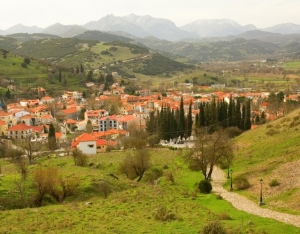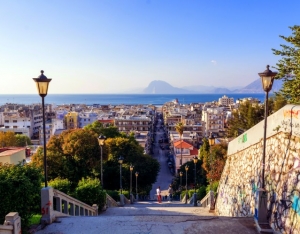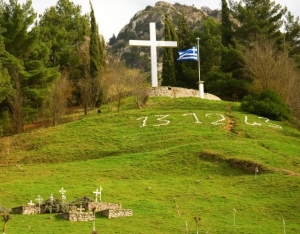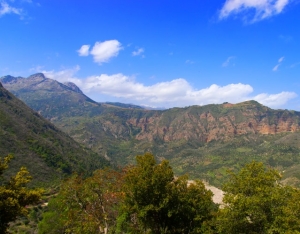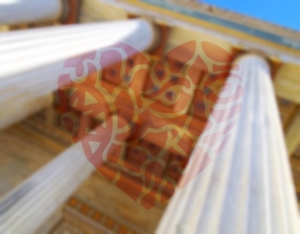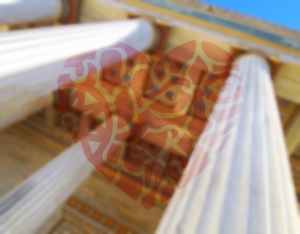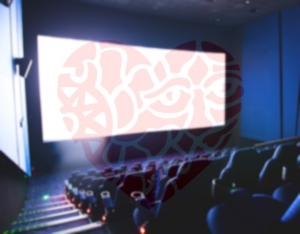Thodoris Bgenopoulos
Kalavryta is located 77 km from Patras, in the region of Achaea.
Kalavryta is a beautiful town in mountainous Achaea, built on the slopes of Helmos (Aroania Mountains) at an altitude of 737 meters. Thanks to its excellent tourist infrastructure and the very good ski resort of Kalavryta, Kalavryta is one of the top winter destinations in Greece, especially for those who love winter sports.
You can reach Kalavryta by drive, but it is worth using the cog railway. It connects Diakopto with Kalavryta, crossing the Vouraikos Gorge through a landscape of unique beauty.
In Kalavryta you will find excellent hotels and guest houses to stay overnight in between your ski or other outings. Moreover, Kalavryta offers a wide range of quality dining options. Enjoy delicious flavors in taverns, restaurants and mezedopoleia (traditional greek places where small food plates are served with ouzo or tsipouro) and after a long day on the mountain have a coffee or drink in the cozy cafes and bars.
In the region of Kalavryta you can admire natural beauty at its best in Spileo ton Limnon (the Cave of the Lakes) and Vouraikos Canyon, as well as two of the most famous monasteries in Greece, namely the Monastery of Agia Lavra and the Moni Megalou Spilaiou (Monastery of the Great Cave) also known simply as the Mega Spilaio(Great Cave).
The History of Kalavryta is extremely rich, especially during the Frankish empire and Greek Revolution. Unfortunately, the most significant day in its history is also the most negative. On December 13, 1943 the German occupation troops executed almost the entire male population and burned the city. It is estimated that over 800 people died that day and it became worldwide known as the Massacre of Kalavryta. In memory of the victims, a monument for the fallen was created as well as the Municipal Museum of the Kalavritan Holocaust.
The truth is that Kalavryta deserve your attention and a visit will definitely leave you satisfied.
Patras is the capital of Achaea and the third biggest city in Greece.
Patras is located on the north coast of the Peloponnese, in the western foothills of Mount Panachaiko and is surrounded by the Gulf of Patras, a natural continuation of the Ionian Sea.
Patras is called the "gate of Greece to the West" due to its large commercial port,connecting Greece with Italy and the rest of Europe.
Patras has everything you would expect from such a big city. Great market, welcoming hotels and quality restaurants with huge variety. With so many great bars, clubs, cafes, bouzoukia (the famous greek entertainment featuring live music) and several other entertainment proposals, you will definitely be at a loss, wondering what to do first.
In Patras there are many attractions. Museums such as the Archaeological Museum of Patras, the Historical and Ethnological Museum and the Press Museum. Cultural spaces of great beauty, such as the Roman Odeon and the Apollo Theater. And even the Medieval Castle of Patras, the Church of Agios Andreas (St. Andrew), the winery Achaia Clauss, the Rio Antirrio Bridge in Rio and so many others are waiting for you to discover them.
But the most important and famous attraction of Patras is not a property, not a museum or a church; its the famous Carnival of Patras (Patrino Karnavali). It is the biggest European carnival that every year attracts hundreds of thousands of visitors.
Having read all that, you should already be packing for a trip to Patras.
Archaeological findings reveal that Achaea has been inhabited since ancient times. The first to inhabit the region were the Pelasgians, who called it Aigialeia. Later the Ionians settled in and named the area Ionia, when in 1088 BC it was Achaeans' turn to settle and gave it its present name, Achaea. The Achaeans founded the city of Patras by joining existing settlements on the initiative of Patreas, from whom it is said to have gotten its name.
During Roman times, Patras flourished as a point of strategic importance. In the early 13th century Achaea is occupied by the Franks who divide it into 48 small fiefdoms. 28 of them constituted the barony of Patras, 12 the barony of Kalavryta and 9 the barony of Aigio. In 1430 Constantine Palaiologos (Palaeologus) occupies the Castle of Patras and releases Achaea. However, the joy this brings does not last long as Achaea is forced to follow the fate of the rest of the country and falls in 1460 into the hands of the Turks. They maintain it until the Greek Revolution of 1821, with a slight respite between 1687 and 1715 that Achaea comes into the Venetians' possession. Patras and the wider region of Achaea lead the revolution, being one of the first regions to shake off the Turkish yoke and regain freedom. Unfortunately though, it seems that Achaea was meant to pay another big toll, at this time during the Second World War. The German army destroyed Kalavryta and exterminated the male population, leaving over 800 dead in what was called the Massacre of Kalavryta.
The region of Achaea is located in the northern part of the Peloponnese. It has an area of 3271 square kilometers and about 400,000 inhabitants.
It borders to the east with the region of Corinthia, to the south with the region of Arcadia and the southwest with Ilia. Achaea has many beautiful beaches, since it is surrounded by sea. In the north there is the gulf of Patras and the Corinthian Gulf and in the west the Ionian Sea.
The capital is Patras, the third largest city of Greece, which is also the country's main ferry gateway to western Europe thanks to its port. Among the other towns and villages of the area, the ones that that stand out are Aigio, Rio, Diakopto and Kalavryta, one of the most popular winter destinations in Greece.
The region of Achaea is in most part mountainous. From its mountains three stand out: Helmos, Erymanthos and Panachaiko. The region also has many rivers like Vouraikos and Selinountas, while it is the head of Erymanthos and Ladon rivers which lead to the Alpheus, the largest river in the Peloponnese. Several lagoons and the lake Lamia (Lamia)can be found in the northwest of the region, while near Kalavryta is the Lake Tsivlou that has been created by a natural landslide of Krathis riverbed in 1913.
The climate of Achaea is characterized as temperate mediterranean, yet it varies depending on altitude and as you move from coast to inland.
Mykonos, like every other place in Greece, maintains its own traditions and customs, which visitors have the chance to get to know through various events.
Easter in Mykonos, as throughout Greece, is a once in a lifetime experience not to be missed. The procession of the Epitaph in the scenic alleys, the Resurrection of Christ with the following fireworks and of course the much-anticipated Eastern dinner, will undoubtedly remain deeply etched in the memory of every visitor. The celebrations conclude with Juda's burning in the central square of Mykonos.
Theofania, which is how Christ's baptism by John the Baptist is known in Greek, is another big celebration for Mykonos. In January the 6th, priests walk around the streets blessing the houses, until they reach the port together with the rest of the people. There, they throw the cross in the sea to sanctify the waters and thereby bless the marines with good luck throughout the year. It is considered a great honor to dive in the freezing cold sea and catch the cross, and the one to succeed is thought to be greatly blessed.
Besides Easter and Theofania, there are several panigiria-festivals and celebrations of religious nature, such as:
- 30th of June, Fishermen's Festival-Agion Apostolon
- 17th of July, Agias Marina's day in Ano Mera
- 25th of July, Agias Anna's day by the namesake beach
- 26th of July, Agias Paraskevi's
- 27th of July, Agiou Padeleimona in Marathi
- 15th of August, Panagias(Virgin Mary's) Tourlianis in Ano Mera
- 23th of August, Eniamera tis Panagias in Ano Mera (The ninth day of Virgin Mary's death)
- 14th of September, the day of the Cross in Marathi
- 6th of December, Agios Nikolaos day
For further information do not hesitate to contact the ΚΔΕΠΑΜ (KDEPAM: Common Benefit Municipal Association for the Cultural Development of Mykonos) via tel. 22890 - 27190 and 22890 -27791, but also the very active Folk and Cultural Women Association of Mykonos www.mykonoswomenculture.gr , tel. 22890 22892).
The Aegean Maritime Museum was founded in 1988, by the shipowner Georgios M. Drakopoulos It is housed in a traditional 19th-century building right in the center of the Mykonian Chora, next to Lena's House. The building previously belonged to the legendary Mykonian Captain Nicholas Sourmeli, who aided with his ship the Cretans in their struggle against the Turks.
Within the halls of the Aegean Maritime Museum the whole maritime history of the island of Mykonos unfolds, starting from the time of the Cycladic civilization and reaching almost to modern times. Ancient coins with maritime themes, amphorae from wrecks and brass instruments for navigation, offer a taste of the ancient times, and there is also a room dedicated to the revolution of 1821, with ship models, engravings, prints and manuscripts of the time. This naval journey ends with a room dedicated to the 18th and 19th century ships.
In the Aegean Maritime Museum's garden, visitors can admire, among other exhibits, the original mechanism of Faros Armenistis - Lighthouse Armenistis ( a construct of Sauter -Lemonier, winning in the International Paris Exhibition) that operated up to 1983.
Apart from saving the mechanism of Faros Armenistis - Lighthouse Armenistis, the Maritime Museum took great care into preserving and restoring the traditional sailing ship "Evagelistria"and the cable steamer "Thales of Miletus", both located in Marina Flisvos in Paleo Faliro.
More information concerning the Aegean Maritime Museum, Enoplon Dinameon 10 with Postal Code 846 00,, you can call the tel. 22890 -22700.
Nearby the famous Paraportiani, is the Folklore museum of Mykonos. It was founded by Vasileios Kyriazopoulos in 1958, while the building in the past used to be a residence of Mykonian captains. The museum consists of 6 rooms, where visitors can admire two categories of exhibits. There are exhibits of Greek folk art and other imported items, which were brought by captains on the island of Mykonos in the 18th and 19th centuries. It is worth-mentioning that in a room dedicated to the sea, a part of a 19th century Mykonian sailboat's deck can be found, having its all parts of the ship (anchor, cannons) located on the operative position. In the Folklore Museum of Mykonos you can admire among others, furniture and objects of old time, household items, jewelry, textiles, books, manuscripts and old newspapers, paintings and watercolors, as well as ship models.
All exhibits are representative of the lifestyle the inhabitants of the island used to have in past centuries, thus giving the visitor a feeling for what past life was like in Mykonos.
The Folklore Museum, featuring a Library, is situated in Kastro location. For more information you can call tel. 22890 – 22591 and 22890 - 22748.
As branches of the Folklore Museum, the Agricultural Museum (Mill of Boni: Milos tou Boni) and the House of Lena (Spiti tis Lenas) also operate. The first presents traditional rural facilities and a mill in full operation, and the latter shows visitors the typical middle-class home of the last century. The Agricultural Museum is in the Ano Myloi location (tel. 22890-26246), while the House of Lena is in the Tria Pigadia (Three Wells) region in the center of Chora, right next to the Aegean Maritime Museum (tel 22890-22390).
The Archaeological Museum of Mykonos was created to host the archaeologist D. Stavropoulos' findings in Rineia, and particularly in the 'Pit of Purification. "(vathro-vothro) The museum was built in 1902 under the careful planning of the architect Alexander Lykakis, on a land ceded by the Town's municipality. In 1934 the building became more island-like both externally and internally, while in 1972 another large room was built. Inside the museum you can see a cornucopia of exhibits, such as a large number of jars, funerary statues, urns and columns from Renia. Some exhibits that stand out are:
- Tombstones of Tertia Horaria and Glycon
- A huge burial jar decorated with embossed scenes from the fall of Troy, among which the famous Trojan Horse is discernible.
- A statue of Hercules, a copy that was made of Parian marble in the Hellenistic era
and so many others are waiting for you to see in the Archaeological Museum of Mykonos. The Archaeological Museum is in Kamnaki, at an excellent spot in Mykonos' port, with great view. For more information, contact tel. 22890 – 22325.
In the Chora of Mykonos, there is the open-air cinema "Cine Mado" The cinema is inside the municipal garden (I. Meletopoulos donation), has 200 seats and runs throughout the summer with top-choice movies.
For those who love theater and cannot give away with it even during vacations, Mykonos can make things easy.
During summer, several events take place in the open-air Lakas Theater in Mykonos' Chora. Theatrical performances take place in numerous spaces, including the Cultural Center "Grypario" (tel. 22890 – 28636) which is located a km away from Chora, in the way to Ano Mera. You can be further informed through ΚΔΕΠΑΜ (KDEPAM: Municipal Cultural Development of Mykonos' public benefit) via tel.22890 - 27190 and 22890 -27791.

